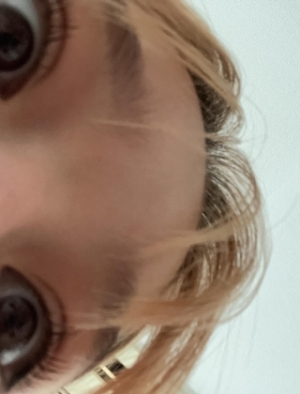Pronunciation Guide for English Words -
英語のための発音案内
Originally Published: / 元所載:
Updated on: / 更新日:
Note: If any Japanese news reporters have any questions about this website, please ask the members of 美麗-Bi-ray. They know almost all the answers and they speak Japanese. (I do not. I've used translation websites and a dictionary to make this pronunciation guide and the lessons that I sent to them.)
通知:日本のニュース記者の方で、このウェブサイトについてご質問がありましたら、美麗-Bi-rayのメンバーにお気軽にお尋ねください。彼らはほぼすべての答えを知っており、日本語も話せます。(私は日本語が話せません。私はこの発音ガイドと私が彼らに送ったレッスンを翻訳サイトや辞書を使って作りました。)
This pronunciation guide works with the dictionary of approximately 4,000 of the most common English words. The Oxford Learner's Dictionaries website has a list of 5,000 of the most common words in British English and also 5,000 in American English. Those words are structured according to the Common European Framework of Reference for Languages (CEFR) and are in levels A1 through C1. C1 is approximately equivalent to Grade 1 in EIKEN, according to the EIKEN website. I compared the Oxford lists to several other lists and also to the book that I published in 2016 and found that most of the words on those lists were the same.
この発音ガイドは、最も一般的な英単語約4000語の辞書と連動している。オックスフォード学習者辞典のウェブサイトには、イギリス英語で最も一般的な単語のリストが5000語、アメリカ英語でも5000語ある。これらの単語は、共通ヨーロッパ言語リファレンスフレームワーク(CEFR)に従って構成され、レベルA1からC1までです。英検のウェブサイトによると、C1は英検の1級にほぼ相当します。オックスフォードのリストを他のいくつかのリストと私は2016年に出版した本と比較したところ、それらのリストのほとんどの単語は同じであることがわかった。
Then I noticed that some of the words were root words that had prefixes and suffixes added to them. I took note of the prefixes and suffixes and reduced the list of words to approximately 4,000. The prefixes and suffixes can be added to form numerous words and expand your vocabulary well beyond 10,000 words. Each dictionary entry will have a pronunciation guide for American English and British English words. Each pronunciation guide will show the sounds in each word and each sound will have a link to this pronunciation guide so that you can know how to make the sound. (Just a note about Dictionary.com: they have ads that redirect a page to another site without warning. I cannot recommend going to that website. I link to it, because the information is good and I used it in the past, but in the past it didn't redirect a person to a totally different website. The Oxford Dictionary website has clear pronunciation recordings and most of the definitions that dictionary.com has, so go there instead. If you click on 'Verb Forms' in an Oxford Dictionary page, it will give you the spellings and pronunciations of each verb form of a word.)
それから、単語の中には、接頭辞や接尾辞が付加されているものもあることに気づいた。接頭辞と接尾辞に筆記 し、単語のリストを約4,000個に減らした。接頭辞や接尾辞を追加することで、多くの単語を形成し、1万語をはるかに超える語彙を増やすことができる。各辞書の記入には、アメリカ英語とイギリス英語の単語の発音ガイドがあります。各発音ガイドには各単語の音が表示され、各音にはこの発音ガイドへのリンクがあり、音の出し方を知ることができる。(Dictionary.comについてのメモ: 彼らは警告なしに他のサイトへページをリダイレクトする広告を持っています。そのウェブサイトに行くことをお勧めできません。情報は良いのでリンクしていますが、過去には全く別のウェブサイトにリダイレクトされることはありませんでした。オックスフォード辞書のウェブサイトには明確な発音録音とdictionary.comが持っているほとんどの定義があるので、代わりにそちらに行ってください。オックスフォード辞書のページで「Verb Forms」をクリックすると、単語の各動詞形のスペルと発音が表示されます。)
This guide will include instructions on how to position your mouth and tongue to make English sounds that are not already in Japanese. I'll also show you which sounds are already in Japanese. (Japanese voice actors use pronunciations that are almost identical to American English sounds that American voice actors use. There are only a few sounds that each language has that the other does not have. I've noticed that voice actors in both countries share the same pronunciation for various sounds and so it should be easy to learn English pronunciation if you can speak Japanese like an anime voice actor.)
このガイドには、非ず日本語になっていない英語の音を出すための口と舌の位置付けについての説明が含まれています。どの音がすでに日本語に中かもお見せします。(日本の声優は、アメリカの声優が使う音にほぼ同じ発音を使用します。お互いの言語が持つ音の中で、互いにないものはほんの少しです。両国の声優がさまざまな音について同じ発音を共有していることに気づきましたので、アニメ声優のように日本語を話すことができれば、英語の発音も簡単に学べるはずです。)
Originally, I told Hyejin, the leader of HINT, that I would teach her English and she wanted to learn vocabulary. That's why I started the first version of the Korean pronunciation guide. That version of the guide was awkward and wordy (too much explanation and the layout was not good), so I wanted to remake it. I borrowed a lot from it to make the English lessons that I sent to 美麗-Bi-ray and to make the Japanese pronunciation guide. Now I'm using the Japanese pronunciation guide as a template for the Korean pronunciation guide.
もともと、HINTのリーダーであるヘジンに、私が英語を教えると言ったんだけど、彼女は語彙を学びたいと思っていたんだ。だから、韓国語の発音ガイドの最初のバージョンを始めたんだ。そのガイドのバージョンがぎこちなくて言葉が多い(説明が多すぎてレイアウトが良くなかった)ので作り直したいと思いました。美麗-Bi-rayに送った英語のレッスンや日本語の発音ガイドを作るためにたくさんお借りしました。今は日本語の発音ガイドを韓国語の発音ガイドのテンプレートとして使っています。
In this pronunciation guide, I'm going to use 美麗-Bi-ray's 'Narrative Version' music video. Since I'm promoting them, here's everything that you need to know about 美麗-Bi-ray.
発音ガイドでは、美麗-Bi-rayのミュージックビデオを「Narrative Version」の使うつもりだ。プロモーションをしているので、美麗-Bi-rayについて知っておくべきことはここにある。

Thank you, Emi.
ありがとう、エミちゃん。
🍁 Michelle Chuma, Ninja, Leader / 中馬美貝、透、リーダー 🌷



✨ Princess Emi of the House of Kumamoto / 熊本家のエミ姫 ✨



🔥 Hinata Kumanohoso, Supermodel / 熊之細陽葵、スーパーモデル 🔥



✨ Cocomi Shimazu, The Fabulous / 島津心美、豪華らしい ✨



The official accounts follow the members.
公式アカウントはメンバーにフォローされています。
https://www.bi-ray.net/
https://jp.bi-ray.net/
https://x.com/bi_rayofficial
https://www.tiktok.com/@biray_official/
https://www.youtube.com/@bi_ray_official
https://www.instagram.com/bi_rayofficial
Produced by / 制作者
🎼 YOSHIKI 🥁
X JAPAN - TEARS - composed by YOSHIKI
https://www.yoshiki.net/
https://jp.yoshiki.net/
https://www.tiktok.com/@yoshikiofficial
https://x.com/yoshikiofficial
https://www.youtube.com/@Yoshiki
https://www.instagram.com/yoshikiofficial/
Here's their debut MV.
デビューミュージックビデオです。
美麗-Bi-ray - "Butterfly" - Debut Single, produced by YOSHIKI
And here is the 'Narrative Version' of their Music Video.
そしてこちらが彼らのミュージックビデの「Narrative Version」です。
美麗 Bi-ray, Rebel Wilson, Anna Camp and Yoshiki "Butterfly (Narrative Version)" Directed by Yoshiki
Butterfly lyrics / 歌詞
Tonight, I'm flyin' like a butterfly
Don't say, "It's just a dream," no no no
The end of the night
I'll reach for the stars of light
Finding my way
No matter the darkness blinding my way
I'll reach for the sky, Reach for the light
Reach for the stars of light
(Baby, let's fly high)
So you can be the one to always say "no... nah nah nah"
So you could be the one to always say yeah... "yeah yeah yeah"
You can be the one "be wanna be, somebody, gotta be, gonna be"
So you can be the one to always find a way
You never see me saw me cryin', but I do
Could be the one to do the dryin', a few
You can dry my tears
Don't wanna be somebody, gotta be, gonna be
So you can be the one to always dry away
We'll bridge the skies, we're flyin' high
Let the beauty lie, We're flying butterflies
So you can be the one to always say "no... nah nah nah"
So you could be the one to always say "yeah... yeah yeah yeah"
You can be the one "be wanna be, somebody, gotta be, gonna be"
So you can be the one to always find a way
You never see me saw me cryin', but I do
Could be the one to do the dryin', a few
You can dry my tears
Don't wanna be somebody, gotta be, gonna be
So you can be the one to always dry away
We'll bridge the skies, we're flyin' high
Let the beauty lie, we're flying butterflies
Butter, Butter, Butterfly
Butter, Butter, Butter, Butter, Butter, Butterfly
Butter, Butter, Butterfly
Butter, Butter, Butter, Butter, Butter, Butterfly
Soaring through the dreamy sky, we're butterflies
Go over the moon, it's daisy's night, flying butterflies
Soaring through the dreamy sky, we're butterflies
Go over the moon, it's daisy's night, flying butterflies
Butterflies, Butterflies, Butterflies
So you can be the one to always say "no... nah nah nah"
So you can be the one to always say "yeah... yeah yeah yeah"
You can be the one "be wanna be, somebody, gotta be, gonna be"
So you can be the one to always find a way
You never see me saw me cryin', but I do
Could be the one to do the dryin', a few
You can dry my tears, don't wanna be somebody, gotta be, gonna be
So you can be the one to always dry away
So you can be the one to always find a way
So you can be "don't wanna be, somebody, gotta be far away"
We'll bridge the skies, we're flyin' high
(We're flying butterflies)
Let the beauty lie, We're flying 'cross the sky
(See the rainbow in the sky) (Across the sky)
We'll bridge the skies, we're flyin' high
(We're flying butterflies)
Let the beauty lie, we're flying butterflies
Tonight, I'm flyin' like a butterfly
Don't say, "It's just a dream," no no no
The end of the night
I reach for the stars of light
Finding my way
No matter the darkness blinding my way
I'll reach for the sky
Reach for the light
Reach for the stars of light
This masterpiece was created by YOSHIKI and it contains almost all the sounds of the English language in fast and slow pronunciation.
この傑作はYOSHIKIによって作られ、英語のほとんどの音が速くゆっくりとした発音で含まれています。
"But how can I speak like that!? They were professionally trained!" The training I'm about to give to you is the same training that I gave to them before they recorded that song. They learned some things before I met them, so there will be training on this page that is not a copy and paste of what I sent to them, but will be of the same quality. The rest is directly a copy and paste of what I sent to them.
「でも、どうしてそんな風に話せるの!?彼らはプロとして訓練されていたんだ!」私が今からあなたに与える訓練は、彼らがその曲を録音する前に私が彼らに与えたのと同じ訓練です。彼らは私と出会う前にいくつかのことを学んでいたので、このページには彼らに送った内容のコピーとペーストではない訓練も含まれますが、品質は同じです。残りの部分は、私が彼らに送った内容を直接コピーとペーストしたものです。
History of the English Language / 英語の歴史
Before I continue, I'd like to thank Yutaka Emura for making EmEditor, an editing app (among other things) that allowed me to create the dictionary webpage quickly and easily. If you enjoyed using the pronunciation guide and dictionary, please check out EmEditor. (You can change the language in the top-right corner of the website.) There is a free version for personal use. It has more features than I can describe in one paragraph (and Emura-san has been working on it for over 20 years).
続ける前に、EmEditorという編集アプリ(他のものも含めて)を作ってくれた江村豊さんに感謝したいと思います。このアプリのおかげで、辞書ウェブページを迅速かつ簡単に作成することができました。発音ガイドや辞書を楽しんでいただけたなら、ぜひEmEditorをチェックしてください。(ホムペ の右上隅で言語を変更できます。)個人使用のための無料バージョンあります。一段落では説明しきれないほど多くの機能があります(江村さんは20年以上にわたって開発に取り組んでいます)。
There's no wrong pronunciation. Standard English is written English.
間違った発音はありません。標準英語は英語で書かれています。
Many years ago, people in England didn't move around much and people developed accents. Because of that, historical pronunciation is different all over England. The British accent, American accent and Australian accent are all accents from different times in British history, but all those accents are used in England today. Because of that, when people spelled words the way they pronounced them, people couldn't read each other's writing and understand what it meant without knowing how the other person pronounces words.
何年も前、イギリスの人々はあまり移動せず、アクセントを発達させました。そのため、歴史的な発音はイギリス全土で異なります。イギリスのアクセント、アメリカのアクセント、オーストラリアのアクセントはすべて、イギリスの歴史のさまざまな時代のアクセントですが、それらのアクセントはすべて今日のイギリスで使用されています。そのため、人々が自分の発音どおりに単語を綴ると、他の人が単語をどのように発音するかを知らずに、お互いの文章を読んで意味を理解することができませんでした。
So a form of standardization was made for English spelling, but not for pronunciation. When people were standardizing spelling, they didn't choose the spellings scientifically.
したがって、英語のスペルについては標準化が行われましたが、発音については行われませんでした。人々がスペルを標準化していたとき、彼らは科学的にスペルを選択しませんでした。
Some words are spelled completely differently compared to how they're pronounced. The spellings were not chosen based on one system. Later, there was 'The Great Vowel Shift' and pronunciation changed again compared to spelling. Many of those words are historically English words.
いくつかの単語のスペルは、発音方法と全く異なります。スペルは1つのシステムに基づいて選択されていません。その後、「大母音のシフト」があり、スペルと比較して発音が再び変わりました。これらの単語の多くは歴史的には英語です。
English borrowed many words. Only 8% or 11% of the words in English today are historical English words. Most of the borrowed words are from Latin, Greek or French. France conquered England at one point in history. English borrowed many words from French. French and English both borrowed from Latin and Greek. Latin and Greek borrowed from each other. As a result, many words look similar and have similar meaning, but different spelling and pronunciation.
英語は多くの単語を借用しています。現在、英語の単語の8%または11%だけが歴史的な英単語です。借用語のほとんどはラテン語、ギリシャ語、またはフランス語から来ています。フランスは歴史上のある時点でイギリスを征服しました。英語はフランス語から多くの単語を借用しました。英語とフランス語はラテン語とギリシャ語から借用されています。ラテン語とギリシャ語は互いに借用しています。その結果、多くの単語が似ていて意味は似ているが、スペルと発音は異なる。
French, Latin and Greek all have a system of their own. French is a language that has silent letters and different pronunciation compared to English. Greek words are usually pronounced the same way they're spelled, but some letter combinations represent Greek sounds that are not present in English. And that brings us to an interesting point.
フランス語、ラテン語、ギリシャ語はすべて独自のシステムを持っています。フランス語は英語と発音が違う無声文字の言語です。ギリシャ語の単語は通常、スペルと同じように発音されますが、いくつかの文字の組み合わせは、英語にはないギリシャ語の音を表しています。そして、興味深い点に至りました。
Proper Pronunciation / 正しい発音
English is musical.
英語は音楽です。
The English language has rhythm, rhyme and flow. The English language also uses sound to create atmosphere.
英語にはリズム、韻、流れがある。英語はまた、雰囲気を作り出すために音を使います。
The atmosphere tells about emotion. The sounds of what is being said can carry meaning and inform the context of what is being said. Japanese has vocabulary to indicate the emotion with which something is said. English uses some vocabulary, but mostly sound to set the atmosphere when conveying emotion.
雰囲気は感情について語る。 語られていることの音は意味を持ち、語られていることの文脈を伝えることができる。 日本語には、何かを言うときの感情を表す語彙があります。 英語はある程度の語彙を使いますが、感情を伝えるときの雰囲気を整えるために音がほとんどです。
Authors know this and choose their words to carry emotion. People read books and hear the pronunciation of words in their heads as they read (this creates emotion, rhythm and rhyme. It also sets the pace of a written story, the same way that rhythm and emotion sets the pace of a song).
著者はそれを知り、感情を伝えるために言葉を選ぶ。 人々は本を読み、読むときに頭の中で単語の発音を聞く(これは感情、リズム、韻を作り出す。 それはまた、リズムと感情が歌のペースを決めるのと同じように、書かれた物語のペースを設定します)。
When you know how to pronounce words properly to create rhythm and flow, you can set the pace of what is being said and make it sound musical. However, there is no 'right way' to pronounce words. Standard English is written English. A singer can change pronunciation in a song to make it rhyme and flow. Changing the pronunciation in a song is like arranging the music differently; they can both change the flavour of a song, especially when they're done together well.
単語の発音を正しくしてリズムと流れを作る方法が分かれば、話の速度を決めて音楽的に聞こえるようにすることができる。しかし、単語を発音する「正しい方法」はありません。標準英語は英語で書かれています。歌手は歌の発音を変えて韻を踏んで流れるようにすることができる。歌の中で発音を変えることは、曲のアレンジを変えるようなものです。特に一緒にうまくできたときには、どちらも曲の好みを変えることができます。
We don't use pitch to distinguish between the meanings of two words (we use stressed syllables for that), but we do use pitch for proper pronunciation and rhythm and flow. Some words and sentences don't flow without a proper pitch pattern. That's why pitch is important. There are some letters that have higher or lower pitch in specific words, but the pitch can be higher or lower relative to the letters or syllables that surround that letter. This gives the flexibility to let entire syllables or words have pitch relative to each other, and to change the pitch, depending on what sounds good in a sentence.
私たちは2つの単語の意味を区別するために音の高低を使用しません(そのために強調された音節を使用します)が、適切な発音とリズム、流れのためには音の高低を使用します。特定の音程パターンがないと、いくつかの単語や文は流れません。だからこそ音の高低は重要なのです。特定の単語には高い音や低い音を持つ文字がありますが、その音はその文字を囲む文字や音節に対して高いまたは低いことができます。これにより、全体の音節や単語が互いに対して音の高低を持つ柔軟性が生まれ、文の中で良い音がするものに応じて音の高低を変えることができます。
Pronunciation usually has three pitches: low, normal, and high. Most words can be pronounced in any pitch, but some specific letters have a high or low pitch in some words. In addition, some phrases have a specific pitch pattern to make them sound good. That's because high-pitched sounds usually indicate excitement while low-pitched sounds can indicate more grounded emotions and a somber tone. Also, some words and syllables are easier to pronounce at a low or high pitch. Pitch usually transitions from low or high to high or low when it moves from a consonant to a vowel or from a vowel to a consonant.
発音には通常、低音、普通音、高音の3つのピッチがあります。ほとんどの単語はどのピッチでも発音できますが、一部の単語では特定の文字のピッチが高くなったり低くなったりします。さらに、一部のフレーズには、よく聞こえるように特定のピッチ パターンがあります。なぜなら、高音は通常、興奮を表し、低音はより落ち着いた感情や重苦しい雰囲気を表すことができるからです。また、いくつかの単語や音節は、低音または高音で発音する方が容易です。ピッチは通常、子音から母音へ、または母音から子音へ移行するときに、低いまたは高い音から高いまたは低い音へ移行します。
A syllable that's stressed can indicate meaning. Some syllables need to be stressed to show meaning and distinguish between words that have the same pronunciation, but stress can also show subtle emotion and change the meaning or context of what is being said (that will be covered in a separate lesson). In novels, italics are often used to add stress to specific words.
強勢のある音節は意味を示すことができます。一部の音節は、意味を示したり、同じ発音の単語を区別したりするために強勢を付ける必要がありますが、強勢は微妙な感情を示したり、話されている内容の意味や文脈を変えたりすることもあります(それについては別のレッスンで扱います)。小説では、特定の単語を強勢するためにイタリック体がよく使用されます。
Pay attention to pitch because it can charge the atmosphere with music that conveys emotional information. Pay attention to stressed words because they can convey meaning that's not stated obviously and pay attention to stressed syllables because they're used to distinguish between words.
ピッチは、感情的な情報を伝える音楽で雰囲気をチャージできるので注意が必要です。強調された単語は、明確に述べられていない意味を伝えることができるため、強調された単語に注意を払い、強調された音節は単語を区別するために使用されるため、注意を払います。
Rhythm and flow is to make things easier to pronounce and to make the stress and pitch sound musical.
リズムとフローとは、物事を発音しやすくし、ストレスやピッチを音楽的に音にするためのものです。
Letters of the Alphabet / アルファベットの文字
There are 26 letters in the English alphabet. Letters also have uppercase and lowercase forms (we call the uppercase letters 'capital letters'). Uppercase letters are often used to represent the sound of a letter's name. There is a spelling rule in English for this.
英語のアルファベットには26の文字があります。文字には大文字と小文字があり(大文字は「キャピタルレター」と呼ばれます)、大文字はしばしば文字名の音を表すために使用されます。これには英語のスペルルールがあります。
There's a spelling rule that says: When a vowel is followed by a consonant and then 'e,' the 'e' becomes silent and the sound of the vowel changes to the name of the vowel. This works when all the letters are in the same syllable.
次のようなスペル規則があります。母音の後に子音、さらに「e」が続くと、「e」が無音になり、母音の音が母音の名前に変わります。これは、すべての文字が同じ音節である場合に機能します。
In addition to that, English fonts can display English in many ways. Two ways are 'with serifs' and 'without serifs' (serifs are small strokes that are added to the main letter strokes to change the visual appearance).
それに加えて、英語のフォントは英語を多くの方法で表示できます。2つの方法は「セリフ付き」と「セリフなし」です(セリフとは、主な文字のストロークに加えられる小さなストロークで、視覚的な外観を変えるためのものです)。
For example, here are all the letters in the English alphabet, in uppercase and lowercase, with serifs and without serifs. The uppercase letters are listed before each lowercase letter.
例えば、ここに英語のアルファベットのすべての文字があります。大文字と小文字、セリフ付きとセリフなしで。大文字はそれぞれの小文字の前にリストされています。
With serifs. セリフありで。
Aa Bb Cc Dd Ee Ff Gg Hh Ii Jj Kk Ll Mm Nn Oo Pp Qq Rr Ss Tt Uu Vv Ww Xx Yy Zz
Without serifs. セリフなしで。
Aa Bb Cc Dd Ee Ff Gg Hh Ii Jj Kk Ll Mm Nn Oo Pp Qq Rr Ss Tt Uu Vv Ww Xx Yy Zz
There is also cursive writing, which is a way of connecting letters with lines, and you can see examples of that in the way I wrote two names.
連筆もあり、これは文字を線でつなぐ方法であり、私が二つの名前を書いた方法でその例を見ることができます。
Cocomi Shimazu, The Fabulous
Aa Bb Cc Dd Ee Ff Gg Hh Ii Jj Kk Ll Mm Nn Oo Pp Qq Rr Ss Tt Uu Vv Ww Xx Yy Zz
Princess Emi of the House of Kumamoto
Aa Bb Cc Dd Ee Ff Gg Hh Ii Jj Kk Ll Mm Nn Oo Pp Qq Rr Ss Tt Uu Vv Ww Xx Yy Zz
Produced by
Aa Bb Cc Dd Ee Ff Gg Hh Ii Jj Kk Ll Mm Nn Oo Pp Qq Rr Ss Tt Uu Vv Ww Xx Yy Zz
Sounds of English Letters / 英語の文字の音
I'll use uppercase letters to represent the names of letters in the pronunciation guide.
発音ガイドでは、アルファベットの名前を大文字で表現します。
This guide will not show pronunciation in alphabetical order because I reference some mouth positions when I explain how to make other sounds. This guide will show how to make sounds in an order that makes sense for the flow of this pronunciation guide.
他の音の出し方を説明するときに口の位置を参考にしているので、このガイドではアルファベット順に発音を表示しません。 このガイドでは、この発音ガイドの流れに合った音の出し方を順番に説明します。
Aa Oo (aw) (oo) (ow) Ii (oy) Uu Ee (ew) Mm Nn Bb Dd Tt (ch) Hh Pp (th) Ss Zz (sh) Jj (jz) Gg (ng) Kk Cc Xx Yy Qq Ff Vv Rr (ar) Ll (or) (er) Ww (gh)
First, we'll start with the easy sounds.
まず、簡単な音から始めましょう。
Japanese syllables are pronounced for the same length of time. The length of English syllables depends on the length of each sound in the syllable. 'in' is a shorter syllable than 'think' because there are more letters and sounds in 'think.'
日本語の音節は同じ長さで発音されます。英語の音節の長さは、音節内の各音の長さによって異なります。「in」は「think」よりも短い音節ですが、これは「think」には文字と音が多いためです。
A
'a' can sound like 'あ,' but it's usually a longer sound and is spelled 'ah' (the 'h' at the end softens the 'a'). You can hear the pronunciation of '(ah)' in 'nah' at in the music video.
「a」は「あ」のように聞こえますが、通常はより長い音で、「ah」と綴られます(末尾の「h」は「a」を柔らかくします)。「(ah)」の「nah」にのミュージックビデオで時間での発音を聞くことができます。
To make the English 'a,' we usually have our lips wider and our mouth more closed (you can also feel your tongue become a little wider when you pronounce 'a,' like in 'can').
英語の「a」を発音するには、通常、唇を広げて口を閉じます (「can」のように、「a」を発音するときに舌が少し広くなるのも感じられます)。
You can hear 'can' pronounced at in the music video.
音楽ビデオので「can」の発音を聞くことができます。
The pronunciation of 'A' is like 'えゆ' as a single sound without the 'う.' You can hear it pronounced in 'say' at in the video and in 'way' at in the video. It strongly corresponds to 'ㅐ' in Korean (when 'ㅐ' is fully pronounced).
「A」の発音は「えゆ」のように「う」なしの一つの音です。動画ので「say」の発音を、で「way」の発音を聞くことができます。これは韓国語の「ㅐ」(完全に発音された時の「ㅐ」)に強く対応しています。
Index / 索引 Sounds of English Letters / 英語の文字の音 Aa Oo (aw) (oo) (ow) Ii (oy) Uu Ee (ew) Mm Nn Bb Dd Tt (ch) Hh Pp (th) Ss Zz (sh) Jj (jz) Gg (ng) Kk Cc Xx Yy Qq Ff Vv Rr (ar) Ll (or) (er) Ww (gh)
O
'お' is not the same as the English 'o' and the mouth position is different. The English 'o' is a sound between 'お' and' あ.' When we pronounce 'o,' the corners of our mouth are relaxed. Try saying 'あ' when your mouth is in a position to say 'お,' but relax the corners of your mouth. That's closer to the English 'o.'
「お」は英語の「o」と同じではなく、口の位置も異なります。英語の「o」は「お」と「あ」の間の音です。「o」を発音するとき、口の端はリラックスしています。口が「お」を発音できる位置にあるときに「あ」と言ってみてください。ただし、口の端はリラックスしてください。これが英語の「o」に近くなります。
You can hear 'o' in 'of' at and and in 'body' in 'somebody' at .
とに「of」に「o」が、に「somebody」の「body」が聞こえます。
The English 'O' isn't in Japanese. It's almost like the 'お' in 'の,' but it ends in a 'w' sound because the shape of the mouth changes ('w' is like 'わ' without the 'あ'). You can hear 'O' in 'no' at and and in 'so' at and .
英語の「O」は日本語にはありません。これは「の」の「お」とほぼ同じですが、口の形が変わるため「w」の音で終わります(「w」は「あ」なしの「わ」のようです)。「no」のと、「so」のとで「O」を聞くことができます。
Most English words use the pronunciation of 'O' at the end of the word, even if the word is spelled with 'o' (that's because 'O' ends with a consonant sound and the pronunciation could be unclear if it ends with 'o').
ほとんどの英単語は、単語の末尾の発音に「O」を使用しています。それは、単語が「o」と綴られていても同じです(なぜなら「O」は子音音で終わるため、「o」で終わると発音が不明確になることがあるからです)。
Index / 索引 Sounds of English Letters / 英語の文字の音 Aa Oo (aw) (oo) (ow) Ii (oy) Uu Ee (ew) Mm Nn Bb Dd Tt (ch) Hh Pp (th) Ss Zz (sh) Jj (jz) Gg (ng) Kk Cc Xx Yy Qq Ff Vv Rr (ar) Ll (or) (er) Ww (gh)
(aw)
The English 'aw' sound is close to an elongated English 'o' sound, but you have to flex muscles below your bottom lip to contract the bottom lip compared to the position in which you would say 'o.'
英語の「aw」の音は、長く伸ばした英語の「o」の音に近いですが、「o」を言うときの位置と比較して、下唇を収縮させるために下唇の下の筋肉を動かさなければなりません。
You can hear this sound pronounced in 'saw' at and . The first 'a' in 'always' is also pronounced 'aw.' You can hear 'always' at , , and .
この音は、とで「saw」と発音されるのを聞くことができます。「always」の最初の「a」も「aw」と発音されます。「always」は、、で聞くことができます。
Index / 索引 Sounds of English Letters / 英語の文字の音 Aa Oo (aw) (oo) (ow) Ii (oy) Uu Ee (ew) Mm Nn Bb Dd Tt (ch) Hh Pp (th) Ss Zz (sh) Jj (jz) Gg (ng) Kk Cc Xx Yy Qq Ff Vv Rr (ar) Ll (or) (er) Ww (gh)
(oo)
The 'oo' sound is like the 'う' in 'ゆ,' but approximately twice as long. You can hear the pronunciation in 'to' at and and in 'do' at . There is also the English word 'too' which has a slightly longer pronunciation to emphasize it and set it apart from 'to.'
「oo」の音は「ゆ」の「う」と同じですが、約2倍の長さです。「to」の発音はと、そして「do」の発音はで聞けます。また、英語の「too」は、強調するためにわずかに長い発音を持っており、「to」と区別されます。
Index / 索引 Sounds of English Letters / 英語の文字の音 Aa Oo (aw) (oo) (ow) Ii (oy) Uu Ee (ew) Mm Nn Bb Dd Tt (ch) Hh Pp (th) Ss Zz (sh) Jj (jz) Gg (ng) Kk Cc Xx Yy Qq Ff Vv Rr (ar) Ll (or) (er) Ww (gh)
(ow)
This has two pronunciations. In some words, it's pronounced 'O' and in other words it's pronounced almost like 'わ' backwards or with an 'O' that begins with 'あ' instead of 'お.'
これは二つの発音があります。一部の単語では「O」と発音され、他の単語では「わ」の逆のように、または「お」ではなく「あ」から始まる「O」として発音されます。
In the dictionary, I'll represent the first pronunciation as 'O' and the second pronunciation as '(ow).'
辞書では、最初の発音を「O」と表し、2番目の発音を「(ow)」と表記します。
You can hear the pronunciation of '(ow)' in 'proud' at in the music video.
ミュージックビデオので「proud」の「(ow)」の発音を聞くことができます。
Index / 索引 Sounds of English Letters / 英語の文字の音 Aa Oo (aw) (oo) (ow) Ii (oy) Uu Ee (ew) Mm Nn Bb Dd Tt (ch) Hh Pp (th) Ss Zz (sh) Jj (jz) Gg (ng) Kk Cc Xx Yy Qq Ff Vv Rr (ar) Ll (or) (er) Ww (gh)
I
'い' is almost the same as the English 'i,' but there's something you should know.
「い」は英語の「i」とほぼ同じですが、知っておくべきことがあります。
Japanese syllables are pronounced for the same length of time. The length of English syllables depends on the length of each sound in the syllable.
日本語の音節は同じ長さで発音されます。英語の音節の長さは、音節内の各音の長さによって異なります。
The length of 'i' is more like 'い' in 'み.' It's a short 'い' sound. There is a short 'i' and a long 'i (ee)' and they are used in different words.
「i」の長さは「み」の「い」に似ています。短い「い」の音です。短い「i」と長い「i(ee)」があり、それらは異なる単語で使用されます。
The English 'i' is softer than the Japanese 'い.' (It's not as sharp as the pronunciation of 'い.')
英語の「i」は日本語の「い」よりも柔らかいです。(「い」の発音ほど鋭くはありません。)
The sound also changes depending on the consonants that come before and after it (because of lazy pronunciation).
前後の子音によっても音が変わります(怠惰な発音のため)。
Sounds like 'b' and 'f' flex muscles in the bottom lip. When making the 'i' sound, muscles in the cheek flex to pull the corners of the mouth up. When 'i' is behind a sound like 'b' and followed by a consonant, we don't pull the corners of our mouth all the way to make a proper 'i' sound. For speed of pronunciation, we just say 'i' in whichever position our mouth is in after we pronounce the first consonant because 'i' is short and another consonant comes right after it in the syllable. For example, 'bit' and 'bin.'
「b」と「f」は下唇の筋肉を曲げるように聞こえます。「i」の音を発するときは、頬の筋肉が曲げられて口角が上がります。「i」が「b」のような音の後ろにあり、その後に子音が続く場合、正しい「i」の音を出すために口角を完全に引く必要はありません。発音を速くするために、最初の子音を発音した後、口の位置に関係なく「i」を発音します。これは、「i」が短く、音節内でそのすぐ後に別の子音が来るためです。たとえば、「bit」と「bin」です。
It's not the same pronunciation as 'hit' because 'h' doesn't flex muscles in our bottom lip, so it's easier to pull our lips up to the proper position to pronounce 'i' after we pronounce 'h.' The 'i' in 'hit' sounds better than the 'i' in 'bit' because of mouth position. And it's easier to pronounce low-pitched sounds when our mouth is relaxed. Because of this, 'i' is usually low-pitched in English words.
「h」は下唇の筋肉を曲げないので、「hit」と同じ発音ではありません。そのため、「h」を短く発音した後、唇を正しい位置まで引き上げて「i」を発音する方が簡単です。口の位置の関係で、「hit」の「i」は「bit」の「i」よりもよく聞こえます。また、口をリラックスさせると、低音の発音がしやすくなります。このため、英語の単語では「i」は通常低音になります。
You can hear the 'i' pronunciation in 'ing' in 'finding' at and 'blinding' at and in 'bridge' at . You can hear the long 'ee' pronunciation in 'be' at , , and .
の「finding」、の「blinding」、の「bridge」で「ing」の「i」の発音を聞くことができます。また、、、、の「be」で長い「ee」の発音を聞くことができます。
The 'I' is a combination of 'あ' and 'い' as a single sound and you can hear it throughout the song, but notably in 'tonight' at , in 'I'm' at , and in 'flying' at . (Sometimes 'i' is pronounced as 'I' and sometimes 'y' replaces 'i,' but is also pronounced as 'i' or 'I').
「I」は「あ」と「い」が一つの音として組み合わさったもので、歌の中でずっと聞こえますが、特にの「tonight」、の「I'm」、の「flying」で顕著です。(時々「i」は「I」として発音され、時々「y」が「i」の代わりに使われますが、それも「i」または「I」として発音されます。)
Index / 索引 Sounds of English Letters / 英語の文字の音 Aa Oo (aw) (oo) (ow) Ii (oy) Uu Ee (ew) Mm Nn Bb Dd Tt (ch) Hh Pp (th) Ss Zz (sh) Jj (jz) Gg (ng) Kk Cc Xx Yy Qq Ff Vv Rr (ar) Ll (or) (er) Ww (gh)
(oy)
Even though it's spelled 'oy,' the pronunciation is 'oi' as a single sound with a low-pitched 'i.' The sound begins with the English 'o' and ends with the English 'i.'
綴りは「oy」でも、発音は「oi」であり、低い音の「i」として一つの音で発音されます。この音は英語の「o」で始まり、英語の「i」で終わります。
Index / 索引 Sounds of English Letters / 英語の文字の音 Aa Oo (aw) (oo) (ow) Ii (oy) Uu Ee (ew) Mm Nn Bb Dd Tt (ch) Hh Pp (th) Ss Zz (sh) Jj (jz) Gg (ng) Kk Cc Xx Yy Qq Ff Vv Rr (ar) Ll (or) (er) Ww (gh)
U
'う' is usually the same in English, but the English sound is a little softer and a little longer.
「う」は英語では通常同じですが、英語の音は少し柔らかく、少し長くなります。
The 'u' in English sounds almost like the 'う' in 'く,' but it's a little longer.
英語の「u」は「く」の「う」とほとんど同じように聞こえますが、少し長くなります。
Sometimes, in American and Canadian English, an 'u' in spelling is pronounced 'あ' (like in 'cup'). But in British English, they try to pronounce the words more accurately according to their spelling, so the British 'u' is usually 'う.'
アメリカとカナダ英語では、スペルの「u」が「あ」(「cup」など)と発音されることがあります。しかし、イギリス英語では、スペルに従って単語をより正確に発音しようとするため、イギリスの「u」は通常「う」です。
You can hear the pronunciation of 'u' in 'you' at , and in the video. 'you' is also the pronunciation of 'U' and it's almost like 'ゆ.'
「u」の「you」に、、の時間での発音を聞くことができます。「you」は「U」の発音でもあり、ほぼ「ゆ」のようです。
Index / 索引 Sounds of English Letters / 英語の文字の音 Aa Oo (aw) (oo) (ow) Ii (oy) Uu Ee (ew) Mm Nn Bb Dd Tt (ch) Hh Pp (th) Ss Zz (sh) Jj (jz) Gg (ng) Kk Cc Xx Yy Qq Ff Vv Rr (ar) Ll (or) (er) Ww (gh)
E
The English 'e' is basically the same as 'え.' 'E' is pronounced 'ee' (a long 'i' that I described before).
英語の「e」は基本的に「え」と同じです。「E」は「ee」と発音されます(以前に説明したように、長い「i」となります)。
You can hear 'e' in 'end' at and in 'let's' at .
「end」のと「let's」ので「e」の音を聞くことができます。
Index / 索引 Sounds of English Letters / 英語の文字の音 Aa Oo (aw) (oo) (ow) Ii (oy) Uu Ee (ew) Mm Nn Bb Dd Tt (ch) Hh Pp (th) Ss Zz (sh) Jj (jz) Gg (ng) Kk Cc Xx Yy Qq Ff Vv Rr (ar) Ll (or) (er) Ww (gh)
(ew)
'ew' is almost like 'E(oo)' as one sound. You can hear it in 'beauty' at . It's pronounced 'b(ew) t(ee)'. You can also hear it in 'few' at .
「ew」は1つの音としてほぼ「E(oo)」に近いです。これはの「beauty」の中で聞くことができます。発音は「b(ew) t(ee)」です。「few」のでもそれを聞くことができます。
Index / 索引 Sounds of English Letters / 英語の文字の音 Aa Oo (aw) (oo) (ow) Ii (oy) Uu Ee (ew) Mm Nn Bb Dd Tt (ch) Hh Pp (th) Ss Zz (sh) Jj (jz) Gg (ng) Kk Cc Xx Yy Qq Ff Vv Rr (ar) Ll (or) (er) Ww (gh)
M
The 'm' sound is like 'め' without the 'え.' You can hear it in 'dream' at , in 'matter' at , in 'my' at , in 'somebody' at , and in 'me' at . It's also in other words throughout the song.
「m」の音は「め」から「え」を除いたようなものです。「dream」の、「matter」の、「my」の、「somebody」の、そして「me」ので聞くことができます。この音は歌全体の他の言葉にも含まれています。
'M' is 'め' backwards.
「M」は「め」の逆です。
Index / 索引 Sounds of English Letters / 英語の文字の音 Aa Oo (aw) (oo) (ow) Ii (oy) Uu Ee (ew) Mm Nn Bb Dd Tt (ch) Hh Pp (th) Ss Zz (sh) Jj (jz) Gg (ng) Kk Cc Xx Yy Qq Ff Vv Rr (ar) Ll (or) (er) Ww (gh)
N
The 'n' sound is like 'ね' without the 'え.' You can hear it in 'tonight' at , in 'no' at and , in 'darkness' and 'blinding' at , and in 'wanna' at . It's also throughout the song.
「n」の音は「ね」から「え」を抜いたもので、「tonight」の、「no」のと、「darkness」と「blinding」の、そして「wanna」ので聴くことができます。この音は歌の至る所に存在しています。
'N' is 'ね' backwards.
「N」は「ね」の逆です。
Index / 索引 Sounds of English Letters / 英語の文字の音 Aa Oo (aw) (oo) (ow) Ii (oy) Uu Ee (ew) Mm Nn Bb Dd Tt (ch) Hh Pp (th) Ss Zz (sh) Jj (jz) Gg (ng) Kk Cc Xx Yy Qq Ff Vv Rr (ar) Ll (or) (er) Ww (gh)
B
The English 'b' is 'ば' without 'あ.' You can hear it in 'butterfly' at (and throughout the song), and in 'baby' at , and in 'be' at (and in other times throughout the song).
英語の「b」は「あ」なしで「ば」です。曲の中でに「butterfly」で(そして曲の他の部分でも)、に「baby」で、に「be」で(そして曲の他の部分でも)聞くことができます。
'B' sounds like 'b(ee).' You can hear that sound in 'baby' at .
「B」は「b(ee)」のように聞こえます。その音は「baby」の分で聞くことができます。
Index / 索引 Sounds of English Letters / 英語の文字の音 Aa Oo (aw) (oo) (ow) Ii (oy) Uu Ee (ew) Mm Nn Bb Dd Tt (ch) Hh Pp (th) Ss Zz (sh) Jj (jz) Gg (ng) Kk Cc Xx Yy Qq Ff Vv Rr (ar) Ll (or) (er) Ww (gh)
D
'd' is 'だ' without 'あ.' The pronunciation of 'd' can be heard in 'dream' at , in 'darkness' at , in 'blinding' at , and in 'do' at . It can also be heard throughout the song.
「d」は「だ' ですが、「あ」は含まれていません。「d」の発音は、「dream」の、「darkness」の、「blinding」の、「do」ので聞くことができます。また、曲全体でも聞くことができます。
'D' is 'd(ee).'
「D」は「d(ee)」です。
Index / 索引 Sounds of English Letters / 英語の文字の音 Aa Oo (aw) (oo) (ow) Ii (oy) Uu Ee (ew) Mm Nn Bb Dd Tt (ch) Hh Pp (th) Ss Zz (sh) Jj (jz) Gg (ng) Kk Cc Xx Yy Qq Ff Vv Rr (ar) Ll (or) (er) Ww (gh)
T
't' is 'た' without 'あ.' You can hear it in 'butter' at , in 'butterfly' at (and throughout the song), in 'tonight' at , and in 'stars' at . It's also throughout the song.
「t」は「あ」なしの「た」です。の「butter」、の「butterfly」(曲全体にわたって)、の「tonight」、の「stars」で聞くことができます。また、曲全体にもあります。
'T' is 't(ee).'
「T」は「t(ee)」です。
Index / 索引 Sounds of English Letters / 英語の文字の音 Aa Oo (aw) (oo) (ow) Ii (oy) Uu Ee (ew) Mm Nn Bb Dd Tt (ch) Hh Pp (th) Ss Zz (sh) Jj (jz) Gg (ng) Kk Cc Xx Yy Qq Ff Vv Rr (ar) Ll (or) (er) Ww (gh)
(ch)
'(ch)' is 'ち' without 'い.' You can hear it in 'reach' at , , and .
「(ch)」は「い」のない「ち」です。、、で「reach」に聞くことができます。
Index / 索引 Sounds of English Letters / 英語の文字の音 Aa Oo (aw) (oo) (ow) Ii (oy) Uu Ee (ew) Mm Nn Bb Dd Tt (ch) Hh Pp (th) Ss Zz (sh) Jj (jz) Gg (ng) Kk Cc Xx Yy Qq Ff Vv Rr (ar) Ll (or) (er) Ww (gh)
H
'h' is 'は' without 'あ.' You can hear it in 'high' at , , and .
「h」は「あ」なしで「は」です。「high」は、、で聞くことができます。
'H' is 'A(ch).'
「H」は「A(ch)」です。
Index / 索引 Sounds of English Letters / 英語の文字の音 Aa Oo (aw) (oo) (ow) Ii (oy) Uu Ee (ew) Mm Nn Bb Dd Tt (ch) Hh Pp (th) Ss Zz (sh) Jj (jz) Gg (ng) Kk Cc Xx Yy Qq Ff Vv Rr (ar) Ll (or) (er) Ww (gh)
P
'p' is 'ぱ' without the 'あ.' You can hear the pronunciation of 'p' in 'proud' at .
「p」は「ぱ」に「あ」がないです。で「proud」の「p」の発音を聞くことができます。
'P' is 'p(ee).'
「P」は「p(ee)」です。
Index / 索引 Sounds of English Letters / 英語の文字の音 Aa Oo (aw) (oo) (ow) Ii (oy) Uu Ee (ew) Mm Nn Bb Dd Tt (ch) Hh Pp (th) Ss Zz (sh) Jj (jz) Gg (ng) Kk Cc Xx Yy Qq Ff Vv Rr (ar) Ll (or) (er) Ww (gh)
(th)
The 'th' sound is not used in Japanese. It's the sound of steam coming off a kettle or a pot as the water begins to boil. Pronounce 'b.' The position that your mouth is in after you pronounce 'b' should be a position in which your lips are open. Now put your tongue against the gap between your top teeth and your bottom teeth. Pull your tongue slightly away from your teeth so that air can go past your tongue and through your teeth. Now blow gently without moving your lips. (You will feel air move down over your bottom lip as you blow.)
「th」の音は日本語では使われていません。 水が沸騰し始めると、やかんや鍋から湯気が抜ける音です。 「b」発音します。 「b」を発音した後の口の位置は、唇が開いている位置でなければなりません。 上の歯と下の歯の隙間に舌を当ててください。 舌から少し離して、舌と歯を通して空気が通るようにします。 今度は唇を動かさずに優しく吹いてください(吹くと下唇の上から空気が下に移動するのを感じるでしょう)。
That's the 'th' sound, but there's more than one 'th' sound. The most common 'th' sound is low-pitched with some vibration (the same way that 'z' is 's' with some vibration). The other 'th' sound is high-pitched with no vibration.
これは「th」の音ですが、複数の「th」の音があります。 最も一般的な「th」の音は、ある程度の振動を伴う低音です(「z」がある程度の振動を伴う「s」と同じ方法です)。 もう一つの「音」は、振動のない高音です。
The low-pitched sound is used in words like 'this,' 'that,' 'these,' 'those' and 'them.'
低音は「(this)これ」、「(that)あれ」、「(these)これら」、「(those)あれら」、「(them)彼ら」のような単語で使われます。
The high-pitched sound is used in words like 'thought,' 'think,' 'thing,' 'through,' and 'throw.' You can hear the high-pitched 'th' in the Korean pronunciation guide.
甲高い音は、「(thought)思想」「(think)考える」「(thing)物」「(through)突き抜ける」「(throw)投げる」のような言葉で使われます。韓国語の発音ガイドでは、高音の「th」を聞くことができます。
I distinguish between the low-pitch one and the high-pitched one in the dictionary by representing the low-pitched one in italics (like this: (th)).
私は辞書で低音のものと高音のものを区別し、低音のものをイタリック体(このように:(th))で表しています。
You can hear the low-pitched 'th' in 'the' at .
分に「the」の低い音の「th」を聞くことができます。
Also, you can hear the difference between '(th)e' and the stressed form, '(th)E,' in 'the end of the night' at and . The first word is the stressed form.
また、との「The end of the night」の中で、「(th)e」と強調された形「(th)E」の違いを聞くことができます。最初の言葉が強調された形です。
If you say 'that thing there,' the first and last 'th' are low-pitched and the middle 'th' is high pitched.
「that thing there」と言えば、最初と最終の「th」は低音で、真ん中の「th」は高音です。
If you change the pitch to 'high, low, high,' the sound changes, pronunciation changes, the atmosphere changes, and the speed of the pronunciation changes. The same is true if you say all of them with a high pitch or a low pitch (but the change is more noticeable if you say that phrase with all low-pitched 'th' sounds).
音程を「高く、低く、高く」に変えると音が変わり、発音が変わり、雰囲気が変わり、発音の速度も変わる。 高い音程や低い音程で全てを言う場合も同じです(ただし、低い音程の「th」を全て使う場合は変化がより顕著になります)。
Index / 索引 Sounds of English Letters / 英語の文字の音 Aa Oo (aw) (oo) (ow) Ii (oy) Uu Ee (ew) Mm Nn Bb Dd Tt (ch) Hh Pp (th) Ss Zz (sh) Jj (jz) Gg (ng) Kk Cc Xx Yy Qq Ff Vv Rr (ar) Ll (or) (er) Ww (gh)
S
's' is 'す' without 'う.' You can hear 's' pronounced in 'sky' at , 'say' at , 'somebody' at , and 'so' at .
「s」は「う」を抜かした「す」です。「sky」はで、「say」はで、「somebody」はで、「so」はで「s」の発音を聞くことができます。
'S' is 'es.'
「S」は「es」です。
Index / 索引 Sounds of English Letters / 英語の文字の音 Aa Oo (aw) (oo) (ow) Ii (oy) Uu Ee (ew) Mm Nn Bb Dd Tt (ch) Hh Pp (th) Ss Zz (sh) Jj (jz) Gg (ng) Kk Cc Xx Yy Qq Ff Vv Rr (ar) Ll (or) (er) Ww (gh)
Z
'z' is 'ず' without 'う.' 'z' is a low-pitched 's' with vibration. You can hear the pronunciation in various words in Butterfly, all those words have a 's' spelling that's pronounced 'z,' and it's quite common to pronounce 's' as 'z.'
「z」は「う」を省いた「ず」です。「z」は振動のある低音の「s」です「Butterfly」のさまざまな単語で発音を聞くことができ、これらの単語には「s」という綴りがありますが、「z」と発音されます。そして、「s」を「z」として発音するのは非常に一般的です。
'House' is pronounced with a 's,' but 'houses' is prounonced with two 'z.' Another example is 'windows.' Another example is 'eyes.' Another example is 'friends.'
「House」は「s」で発音されますが、「houses」は2つの「z」で発音されます。別の例は「windows」です。別の例は「eyes」です。もう一つの例は「friends」です。
Notice that it's the pluralization at the end of the word that changes to 'z' even though it's spelled 's.'
単語の最後にある複数形が「s」と綴られていても「z」に変わることに注意してください。
'z' can be heard in 'stars' at . The first 's' is pronounced 's' and the second 's' (the pluralization) is pronounced 'z.' The same is true of 'skies' at . 'daisy's' is pronounced with two 'z' (you can hear it at ). 'always' ends with a 'z' pronunciation (). 'butterflies' ends with a 'z' pronunciation ( and throughout the song).
「z」はに「stars」で聞こえます。最初の「s」は「s」と発音され、2つ目の「s」(複数形)は「z」と発音されます。の「skies」も同じです。「daisy's」は2つの「z」と発音されます(で聞こえます)。「always」は「z」で終わります()。「butterflies」は「z」で終わります(および曲全体で)。
'Z' is 'zed' in British English and 'z(ee)' in American English.
「Z」は英国英語で「zed」、米国英語で「zee」と言います。
Index / 索引 Sounds of English Letters / 英語の文字の音 Aa Oo (aw) (oo) (ow) Ii (oy) Uu Ee (ew) Mm Nn Bb Dd Tt (ch) Hh Pp (th) Ss Zz (sh) Jj (jz) Gg (ng) Kk Cc Xx Yy Qq Ff Vv Rr (ar) Ll (or) (er) Ww (gh)
(sh)
There's a letter combination that represents a sound that is distinct compared to 's.' You can hear the pronunciation in the Korean pronunciation guide. It's 'し' without 'い.' This is important because there are some words that begin with 'shi' and some words that begin with 'si.' 'ship' is '船舶.' 'sip' is '啜.' 'shit' is '糞.' 'sit' is '座る.' In addition, the long '(ee)' and the short 'i' are also important. 'sheep' is '羊.' 'seep' is '染み出す.' 'sheet' is '答案/薄い板/薄い板/敷布.' 'seat' is '座席 .'
「s」とは異なる音を表す文字の組み合わせがあります。それは「し」であり、「い」はありません。韓国語の発音ガイドで発音を聞くことができます。これは重要です。なぜなら、「shi」で始まる単語と「si」で始まる単語があるからです。「ship」は「船舶」、「sip」は「啜」、「shit」は「糞」、「sit」は「座る」です。さらに、長母音の「(ee)」と短母音の「i」も重要です。「sheep」は「羊」、「seep」は「染み出す」、「sheet」は「答案/薄い板/敷布」、「seat」は「座席」です。
There are many words like that.
そういう言葉が多いですね。
Index / 索引 Sounds of English Letters / 英語の文字の音 Aa Oo (aw) (oo) (ow) Ii (oy) Uu Ee (ew) Mm Nn Bb Dd Tt (ch) Hh Pp (th) Ss Zz (sh) Jj (jz) Gg (ng) Kk Cc Xx Yy Qq Ff Vv Rr (ar) Ll (or) (er) Ww (gh)
J
'j' is 'じ' without 'い,' but the pronunciation is a little slower. You can hear it in 'just' at .'
「j」は「い」のない「じ」ですが、発音が少し遅いです。に「just」で聞くことができます。
'J' is 'jA.'
「J」は「jA」です。
Index / 索引 Sounds of English Letters / 英語の文字の音 Aa Oo (aw) (oo) (ow) Ii (oy) Uu Ee (ew) Mm Nn Bb Dd Tt (ch) Hh Pp (th) Ss Zz (sh) Jj (jz) Gg (ng) Kk Cc Xx Yy Qq Ff Vv Rr (ar) Ll (or) (er) Ww (gh)
(jz)
There is a sound in English that does not have a letter representing it. That's because the sound is from French. It's the 's' in 'vision (視覚)' and the 'g' in 'massage (按摩),' among various other words. That sound is like 'j' with excessive vibration, almost until it's unrecognizable, and I represent it with 'jz' in the pronunciation guide and the dictionary.
英語には、表す文字がない音があります。それはフランス語から来ている音です。それは「vision(視覚)」の「s」や「massage(按摩)」の「g」、その他のさまざまな単語に見られます。その音は、過度の振動を伴う「j」のような音で、ほとんど認識できないほどです。私はそれを発音ガイドや辞書では「jz」と表現しています。
Index / 索引 Sounds of English Letters / 英語の文字の音 Aa Oo (aw) (oo) (ow) Ii (oy) Uu Ee (ew) Mm Nn Bb Dd Tt (ch) Hh Pp (th) Ss Zz (sh) Jj (jz) Gg (ng) Kk Cc Xx Yy Qq Ff Vv Rr (ar) Ll (or) (er) Ww (gh)
G
'g' is 'が' without 'あ.' You can hear it in 'gotta' at , , and and in 'gonna' at , , and .
「g」は「あ」なしの「が」です。「gotta」の、、で、そして「gonna」の、、でも聞こえます。
'G' is 'j(ee).'
「G」は「j(ee)」です。
Index / 索引 Sounds of English Letters / 英語の文字の音 Aa Oo (aw) (oo) (ow) Ii (oy) Uu Ee (ew) Mm Nn Bb Dd Tt (ch) Hh Pp (th) Ss Zz (sh) Jj (jz) Gg (ng) Kk Cc Xx Yy Qq Ff Vv Rr (ar) Ll (or) (er) Ww (gh)
(ng)
The 'ng' sound isn't used in Japanese, but it's used in Korean. It's the 'ㅇ' sound at the end of a syllable. '잉' sounds somewhat like 'ing.' Press your tongue against your bottom teeth and make a vibrating sound that comes from the bottom of your mouth.
「ng」の音は日本語では使われていませんが、韓国語では使われています。それは音節の終わりの「ㅇ」の音です。「잉」は「ing」のように聞こえます。舌を下の歯に押し付け、口の下から振動する音を出してください。
You can hear '(ng)' in 'blinding' at , in 'finding' at , and in 'flying' at and (and in other places throughout the song).
「blinding」の、「finding」の、そして「flying」のとで「(ng)」の音を聞くことができます(曲の他の箇所でも聞こえます)。
Index / 索引 Sounds of English Letters / 英語の文字の音 Aa Oo (aw) (oo) (ow) Ii (oy) Uu Ee (ew) Mm Nn Bb Dd Tt (ch) Hh Pp (th) Ss Zz (sh) Jj (jz) Gg (ng) Kk Cc Xx Yy Qq Ff Vv Rr (ar) Ll (or) (er) Ww (gh)
K
'k' is 'か' without 'あ.' You can hear that in 'sky' at and , in 'darkness' at , and in 'skies' at and .
「k」は「あ」なしの「か」です。「sky」のと、「darkness」の、そして「skies」のとでそれが聞こえます。
'K' is 'kA.'
「K」は「kA」です。
Index / 索引 Sounds of English Letters / 英語の文字の音 Aa Oo (aw) (oo) (ow) Ii (oy) Uu Ee (ew) Mm Nn Bb Dd Tt (ch) Hh Pp (th) Ss Zz (sh) Jj (jz) Gg (ng) Kk Cc Xx Yy Qq Ff Vv Rr (ar) Ll (or) (er) Ww (gh)
C
'c' is a soft 'k.' You'll see a letter combination, 'ck,' in words like 'black.' That's because the 'c' transitions between the vowel and the hard 'k.' '(ck)' is a single sound that begins soft and ends hard. You can hear the soft 'c' in 'could' at , , and , and in 'can' at and . It's also in 'cryin'' at and also at .
「c」は柔らかい「k」です。「black」のような単語で「ck」の文字の組み合わせが見られます。これは「c」が母音と硬い「k」の間を遷移するためです。「(ck)」は柔らかく始まり、硬く終わる単一の音です。「could」の中の柔らかい「c」は、、で、「can」の中にはとで聞こえます。また、「cryin'」の中にもとであります。
'C' is 's(ee).'
「C」は「s(ee)」です。
Index / 索引 Sounds of English Letters / 英語の文字の音 Aa Oo (aw) (oo) (ow) Ii (oy) Uu Ee (ew) Mm Nn Bb Dd Tt (ch) Hh Pp (th) Ss Zz (sh) Jj (jz) Gg (ng) Kk Cc Xx Yy Qq Ff Vv Rr (ar) Ll (or) (er) Ww (gh)
X
'x' is 'ks' or 'cs,' depending on the word it's used in ('c' follows a vowel).
「x」は言葉によって「ks」または「cs」として発音されます(「c」は母音の後に来ます)。
'X' is 'ex.'
「X」は「ex」です。
Index / 索引 Sounds of English Letters / 英語の文字の音 Aa Oo (aw) (oo) (ow) Ii (oy) Uu Ee (ew) Mm Nn Bb Dd Tt (ch) Hh Pp (th) Ss Zz (sh) Jj (jz) Gg (ng) Kk Cc Xx Yy Qq Ff Vv Rr (ar) Ll (or) (er) Ww (gh)
Y
'y' is 'ゆ' without 'う.' It's in 'yeah' at and and in 'you' at , , , and throughout the rest of the song.
「y」は「う」を含まない「ゆ」です。とで「yeah」に、、、および曲の残りの部分で「you」に含まれています。
'Y' is 'wI.'
「Y」は「wI」です。
Index / 索引 Sounds of English Letters / 英語の文字の音 Aa Oo (aw) (oo) (ow) Ii (oy) Uu Ee (ew) Mm Nn Bb Dd Tt (ch) Hh Pp (th) Ss Zz (sh) Jj (jz) Gg (ng) Kk Cc Xx Yy Qq Ff Vv Rr (ar) Ll (or) (er) Ww (gh)
Q
'q' is 'kw' or 'cw,' depending on the word and its position in the sentence (if it follows a vowel, it's 'cw'). If it's the first letter in a word, it's usually 'cw.'
「q」は単語とその文中の位置によって「kw」または「cw」です(母音の後に続く場合は「cw」になります)。単語の最初の文字の場合は、通常「cw」です。
'Q' is 'kU.'
「Q」は「kU」です。
Index / 索引 Sounds of English Letters / 英語の文字の音 Aa Oo (aw) (oo) (ow) Ii (oy) Uu Ee (ew) Mm Nn Bb Dd Tt (ch) Hh Pp (th) Ss Zz (sh) Jj (jz) Gg (ng) Kk Cc Xx Yy Qq Ff Vv Rr (ar) Ll (or) (er) Ww (gh)
F
To make the 'f' sound, open your lips wide enough to say 'は.'
「f」の音を出すには、唇を大きく開いて「は」と言います。
Close your jaw enough for your bottom lip to almost touch the bottom edge of your top teeth. Then pull the corners of your mouth against your bottom teeth. Touch the base of your bottom teeth with your tongue. Now blow. That is the ‘f’ sound.
下唇が上の歯の下端にほとんど触れる程度に顎を閉じます。 次に、口角を下の歯に引き寄せます。下の歯の付け根を舌で触ります。さあ、吹く。それが「f」の音です。
'F' is 'ef.'
「F」は「ef」です。
The word 'photograph' is from the Greek word 'photo' and the Latin word 'graph.' The 'ph' in 'photo' is representing a Greek sound that is not in English, but sounds something like 'f' so we pronounce the 'ph' as 'f.' The 'ph' in 'graphy' is also pronounced 'f.'
「写真 / photograph」という言葉はギリシャ語の「photo」とラテン語の「graph」に由来する 「photo」の「ph」はギリシャ語の音を表していますが、英語ではありませんが「f」のように聞こえるので、「ph」を「f」と発音します グラフの「ph」も「f」と発音されます。
'Photo' is from a Greek word meaning 'light.' 'Graph' is from the Latin word that means 'to write.' 'Photograph' means 'writing using light.'
「写真 / photo」はギリシャ語で「光」を意味します。「グラフ / graph」はラテン語で「書く」を意味します。「写真 / photography」は「光を使って書く」という意味です。
You can hear 'f' pronounced in 'flyin' ' and 'flying' at , , and , and in 'butterflies' at , , and , and throughout the song.
「flyin'」と「flying」では、、で「f」の発音が聞こえ、また「butterflies」でも、、で聞こえ、歌全体を通して聞こえます。
Index / 索引 Sounds of English Letters / 英語の文字の音 Aa Oo (aw) (oo) (ow) Ii (oy) Uu Ee (ew) Mm Nn Bb Dd Tt (ch) Hh Pp (th) Ss Zz (sh) Jj (jz) Gg (ng) Kk Cc Xx Yy Qq Ff Vv Rr (ar) Ll (or) (er) Ww (gh)
V
'v' is a low-pitched 'f' with vibration.
「v」は振動のある低音の「f」です。
You can hear 'v' in 'never' at and and in 'over' at .
「never」のと、そして「over」ので「v」の音が聞こえます。
'V' is 'v(ee).'
「V」は「v(ee)」です。
Index / 索引 Sounds of English Letters / 英語の文字の音 Aa Oo (aw) (oo) (ow) Ii (oy) Uu Ee (ew) Mm Nn Bb Dd Tt (ch) Hh Pp (th) Ss Zz (sh) Jj (jz) Gg (ng) Kk Cc Xx Yy Qq Ff Vv Rr (ar) Ll (or) (er) Ww (gh)
R
To pronounce the English 'r,' put your mouth in the position to say 'f' and put your tongue behind your bottom teeth, slightly away from your teeth, and make a vibrating sound.
英語の「r」を発音するには、口を「f」と言う位置に置き、舌を下の歯の後ろに置き、歯から少し離して、振動音を出します。
You can hear 'r' pronounced in 'butterfly' at , , (and elsewhere in the song) and in 'dream' at , in 'reach' at , and in 'darkness' at and in various other words in the song.
「butterfly」の、、(および曲の他の場所)で「r」が発音されているのを聞くことができ、「dream」の、「reach」の、「darkness」の、および曲の他のさまざまな言葉でも同様です。
Also, look at the example under 'w.'
'R' is '(ah)r.'
「R」は「(ah)r」です。
Index / 索引 Sounds of English Letters / 英語の文字の音 Aa Oo (aw) (oo) (ow) Ii (oy) Uu Ee (ew) Mm Nn Bb Dd Tt (ch) Hh Pp (th) Ss Zz (sh) Jj (jz) Gg (ng) Kk Cc Xx Yy Qq Ff Vv Rr (ar) Ll (or) (er) Ww (gh)
(ar)
The English 'ar' sound is '(ah)r,' but '(ah)' is low-pitched. It's a sound that begins with '(ah)' and ends with 'r' and the pitch is the same throughout the sound. It's low-pitched because the 'r' pulls down the pitch of the '(ah).'
英語の「ar」音は「(ah)r」ですが、「(ah)」は低音です。これは「(ah)」で始まり「r」で終わる音で、音全体を通して音の高さは同じです。「r」が「(ah)」の音の高さを下げるため、低音になっています。
You can hear the pronunciation of '(ar)' in 'stars' at and and in 'darkness' at .
「stars」の中の「(ar)」の発音はとで、「darkness」ではで聞くことができます。
Index / 索引 Sounds of English Letters / 英語の文字の音 Aa Oo (aw) (oo) (ow) Ii (oy) Uu Ee (ew) Mm Nn Bb Dd Tt (ch) Hh Pp (th) Ss Zz (sh) Jj (jz) Gg (ng) Kk Cc Xx Yy Qq Ff Vv Rr (ar) Ll (or) (er) Ww (gh)
L
To make the English 'l' sound, put your mouth in a position to say 'は' and put the tip of your tongue against the back of your top teeth, where the teeth meet your gum. The 'l' sound should come out of the bottom of your mouth.
英語の「l」を鳴らすには、口を「は」と言う位置に置き、舌先を上の歯の裏側、歯が歯茎に接する場所に当てます。「l」の音は口の下から出てくるはずです。
You can hear 'l' pronounced in 'flying' at , in 'like' at , and in 'always' at and in various other words in the song.
「flying」のに、「like」のに、「always」のに、そして歌の中のさまざまな他の言葉でも「l」の発音が聞こえます。
Also, look at the example under 'w.'
'L' is 'el.'
「L」は「el」です。
Index / 索引 Sounds of English Letters / 英語の文字の音 Aa Oo (aw) (oo) (ow) Ii (oy) Uu Ee (ew) Mm Nn Bb Dd Tt (ch) Hh Pp (th) Ss Zz (sh) Jj (jz) Gg (ng) Kk Cc Xx Yy Qq Ff Vv Rr (ar) Ll (or) (er) Ww (gh)
(or)
The English '(or)' is basically '(aw)' with a 'r' behind it. It's a single sound that begins with '(aw)' and ends with 'r.'
英語の「(or)」は基本的に「(aw)」の後に「r」が付いたものです。それは「(aw)」で始まり「r」で終わる音です。
You can hear it in 'for' at and . In 'soaring,' 'oar' is pronounced '(or).' You can hear that at .
それはとの「for」で聞くことができます。「soaring」では「oar」が「(or)」と発音されます。それはで聞くことができます。
Index / 索引 Sounds of English Letters / 英語の文字の音 Aa Oo (aw) (oo) (ow) Ii (oy) Uu Ee (ew) Mm Nn Bb Dd Tt (ch) Hh Pp (th) Ss Zz (sh) Jj (jz) Gg (ng) Kk Cc Xx Yy Qq Ff Vv Rr (ar) Ll (or) (er) Ww (gh)
(er)
'(er)' is spelled 'er' and that's how it was pronounced in the old days. These days, it's pronounced almost like somebody was trying to do a small 'burp' and failed.
「(er)」は「er」と綴られ、昔はそう発音されていました。最近では、まるで誰かが小さな「ゲップ」をしようとして失敗したかのように発音されています。
You can hear it pronounced in 'butterfly' at , , and and throughout the song. You can also hear it in 'butter' at and in 'matter' at and in 'never' at and .
「butterfly」の、、や曲全体でその発音を聞くことができます。また、「butter」の、「matter」の、「never」のとでも聞くことができます。
Index / 索引 Sounds of English Letters / 英語の文字の音 Aa Oo (aw) (oo) (ow) Ii (oy) Uu Ee (ew) Mm Nn Bb Dd Tt (ch) Hh Pp (th) Ss Zz (sh) Jj (jz) Gg (ng) Kk Cc Xx Yy Qq Ff Vv Rr (ar) Ll (or) (er) Ww (gh)
W
'w' is 'わ' without 'あ.' You can hear it in 'way' at and . In 'always' at and (and throughout the song). In 'wanna' at and and various other places in the song. In 'we're' at , , and (and throughout the song), and in 'we'll' at .
「w」は「あ」を抜いた「わ」です。との「way」、との「always」(曲全体にわたって)、との「wanna」、曲のさまざまな場所でも。また、、、(曲全体にわたって)の「we're」、の「we'll」でも聞くことができます。
That also shows the difference between 'l' and 'r.' 'We'll' is a contraction of 'we will' and 'we're' is a contraction of 'we are.' A different pronunciation can be a whole different word that carries a different meaning.
「l」と「r」の違いも示しています。「we'll」は「we will(私たちは志)」の短縮形であり、「we're」は「we are(私たちは)」の短縮形です。異なる発音は、異なる意味を持つ全く別の単語になることがあります。
The pronunciation of 'W' is the word 'double' and 'U.' The pronunciation of 'double' is 'd(ah)bl.' The pronunciation of 'W' is 'd(ah)bl U.'
「W」の発音は「double(ダブル)」と「U」です。「double」の発音は「d(ah)bl」です。「W」の発音は「d(ah)bl U」です。
Index / 索引 Sounds of English Letters / 英語の文字の音 Aa Oo (aw) (oo) (ow) Ii (oy) Uu Ee (ew) Mm Nn Bb Dd Tt (ch) Hh Pp (th) Ss Zz (sh) Jj (jz) Gg (ng) Kk Cc Xx Yy Qq Ff Vv Rr (ar) Ll (or) (er) Ww (gh)
(gh)
This is a sound in some borrowed words. It's the pronunciation of 'g' in some languages, but it also is used with other letters. This sound is like putting your mouth in a position to say 'g' and blowing air from the bottom of your mouth. This sound can be commonly heard after people drink alcohol.
これはいくつかの借用語に存在する音です。これはいくつかの言語における「g」の発音ですが、他の文字と一緒に使われることもあります。この音は、「g」を言うための口の位置を取り、口の底から空気を吹き出すようなものです。この音は、人々がアルコールを飲んだ後によく聞かれることがあります。
Here is an example.
ここに例があります。
[Ask Hyojin] Korean Sound Effects / 韓国語効果音 [TalkToMeInKorean]
The sound at in that video is a long sound. The '(gh)' is a much shorter sound, but it's made the same way.
動画のの音は長い音です。「(gh)」はずっと短い音ですが、発音は同じです。
Index / 索引 Sounds of English Letters / 英語の文字の音 Aa Oo (aw) (oo) (ow) Ii (oy) Uu Ee (ew) Mm Nn Bb Dd Tt (ch) Hh Pp (th) Ss Zz (sh) Jj (jz) Gg (ng) Kk Cc Xx Yy Qq Ff Vv Rr (ar) Ll (or) (er) Ww (gh)
That is the end of the pronunciation guide. You can find more words in the dictionary.
以上で発音ガイドを終わります。 辞書でもっと多くの単語を見つけることができます。
A friend of mine, JASHU, is an independent singer in The Philippines. Here is her debut song. I'm posting it here to help her reach a wider audience~
私の友人であるJASHUはフィリピンで独立した歌手です。 これが彼女のデビュー曲です。 僕がここにアップする理由は、 より多くの観客の皆さんに 届くようにするためです ~
JASHU - UWI (Official Video)
JASHU - UWI (Behind the Scenes)
